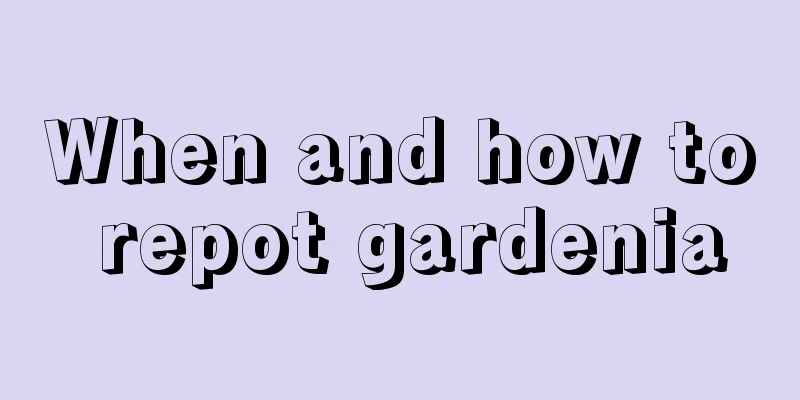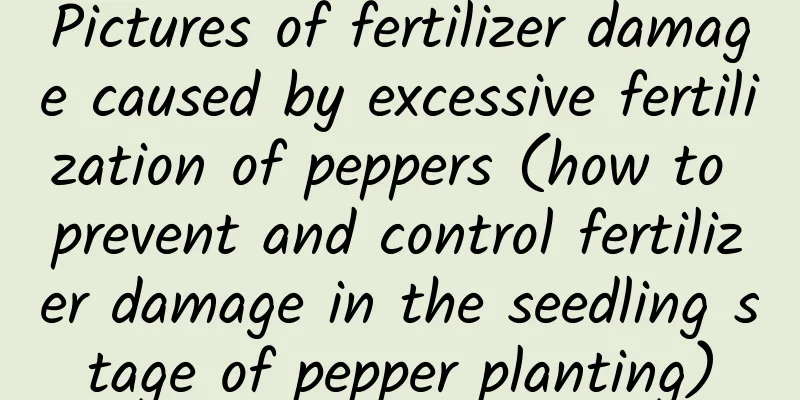When and how to repot gardenia

|
Gardenia is a traditional famous flower in China. It is an aromatic flower plant. It is not only highly ornamental, but also has a fragrant smell and can purify the air. Therefore, many flower lovers like to grow a pot of thistle indoors. So how should you change the pot when growing gardenias? When is the right time to repot? Let’s learn more about it below. Gardenia repotting time The best time to repot gardenias is from March to April in spring and from August to October in autumn. The climatic conditions in these two seasons are suitable, which is conducive to the recovery and growth of the root system after repotting. How to repot gardenia 1. Pot soil selection Choose a pot suitable for growing gardenias and make sure it has adequate drainage holes. The potting soil should be slightly acidic, breathable, and well-drained. It can be mixed with leaf mold, garden soil, etc. The new pot should be one or two sizes larger than the old one, but not too deep to facilitate root growth and development. 2. Remove the pot Gently tap the sides of the pot to separate the soil from the pot, then carefully remove the gardenia from its original pot. After taking it out, pay attention to check the root system and cut off old roots, diseased roots and overly dense roots to promote the growth of new roots. 3. Disinfection Soak the pruned roots in a diluted potassium permanganate solution for disinfection for about 2-3 hours. 4. Planting in pots Place a layer of clay or crushed tiles at the bottom of the pot to provide good drainage. Then add an appropriate amount of new potting soil, leaving enough space for the plant's roots. Carefully place the gardenia's roots in the new potting soil, being careful not to cover the root collar. Fill the area around the plant with new soil, compacting it gently and shaking the pot to remove any gaps. 5. Post-maintenance (1) Place the repotted gardenia in a semi-shaded location to avoid direct sunlight. (2) After repotting, water thoroughly to help the soil and roots to form a close bond. (3) As the plant grows, light and ventilation can be gradually increased. In addition, the amount and frequency of watering should be controlled according to the water requirements of gardenia, and fertilizer should be applied regularly to maintain its healthy growth. In general, repotting gardenias is a key part of their maintenance process. The method is not difficult to master. Just pay attention to the time and some skills, and you can effectively promote the growth and development of gardenia and maintain its good ornamental effect.
|
<<: When can I repot asparagus fern?
>>: How many crucian carp can be raised in one acre of fish pond?
Recommend
How to plant seabuckthorn, seabuckthorn potted planting technology
1. Planting time Sea buckthorn planting is divide...
The language and legend of lavender
The Flower Language of Lavender Waiting for love ...
The difference between cherry crystal and triangular glass lotus
Differences between varieties: Sakura crystal bel...
When to plant kiwi seedlings
1. When to plant It is better to plant this type ...
How to breed spring feathers
Reproduction method Seed propagation Generally sp...
Cultivation method of fragrant wood potted plants
1. Soil It is best to use loose and well-drained ...
The copper coin grass at home is dying. This is how it can be saved.
What should I do if the copper coin grass is dyin...
The Clivia I keep at home is dying. This is how I can save it.
Clivia This is how to treat rotten roots of Clivi...
What is the national orchid of Clivia, and what is the difference between the national orchid and the Anshan orchid
1. What is The "national orchid" of Cli...
Cultivation methods and precautions of bamboo begonia
The scientific name of the bamboo begonia is Zhuj...
What fertilizer to use for the fortune tree
1. Fertilizer types What the money tree needs mos...
The correct way to water spider plants, what to do if you water them too much
1. The correct way to water 1. Watering frequency...
What to do if the chrysanthemum leaves wither
1. Disease problem (1) Specific reasons: The most...
What is the appropriate fertilizer for aloe vera flower fertilizer? How to make and use it
Aloe Vera Fertilizer In addition to nitrogen, pho...
What is Evergreen?
What is Evergreen? It is Chinese cabbage, which i...









